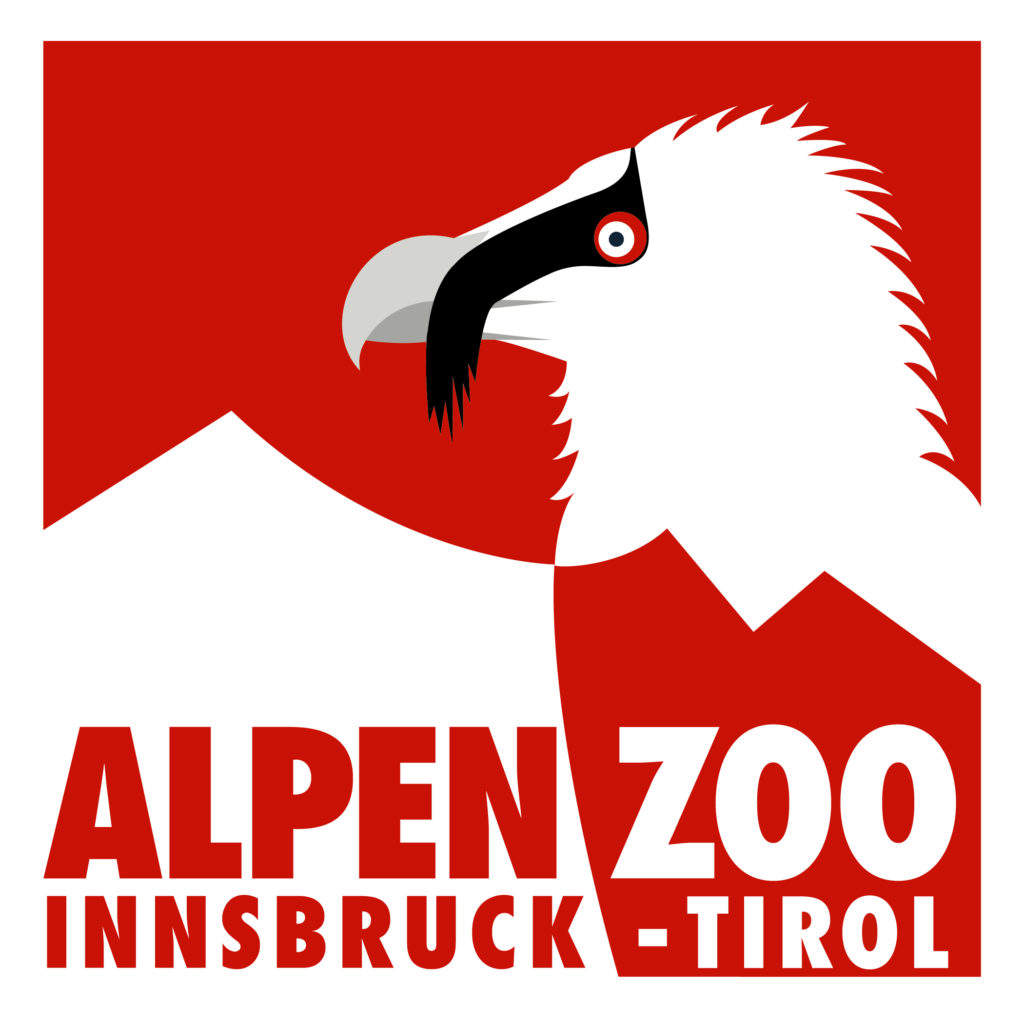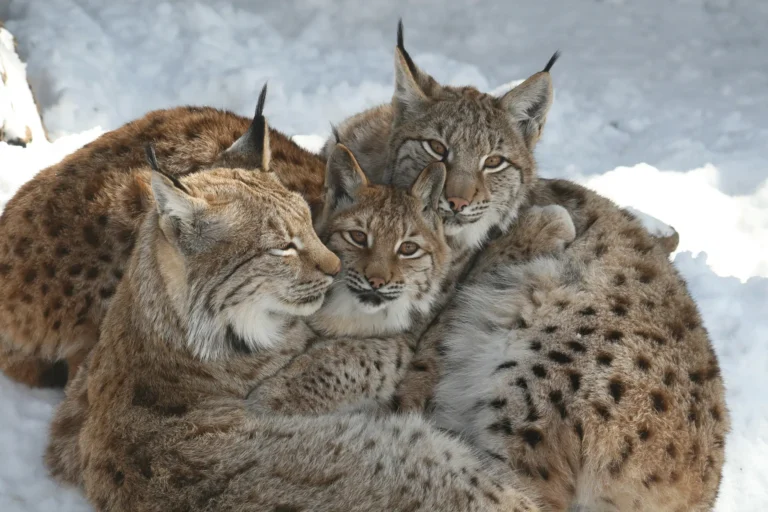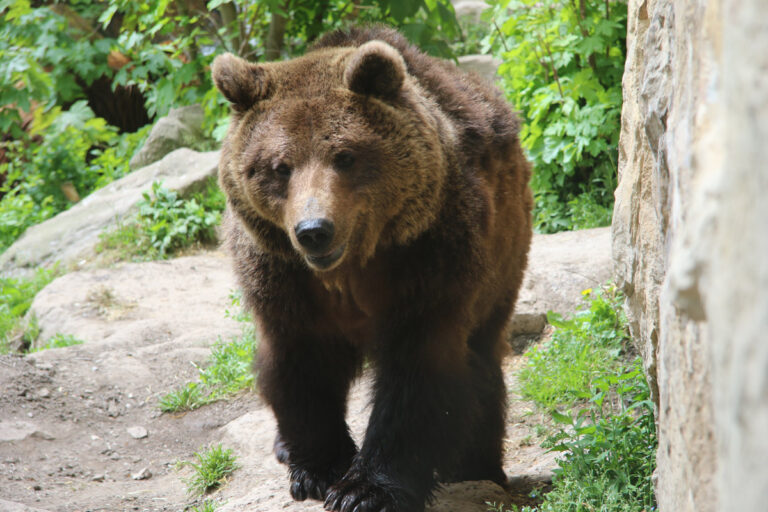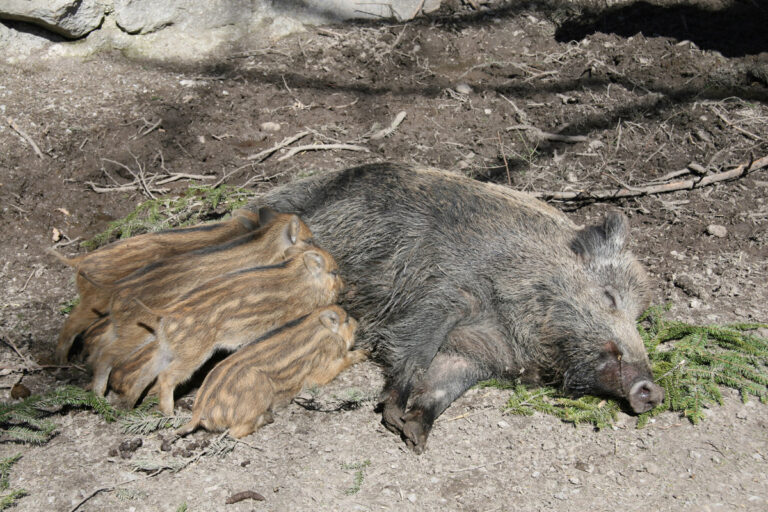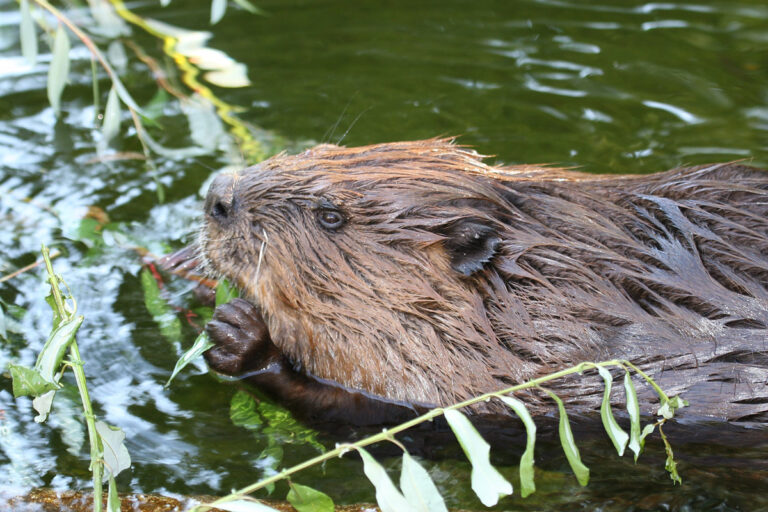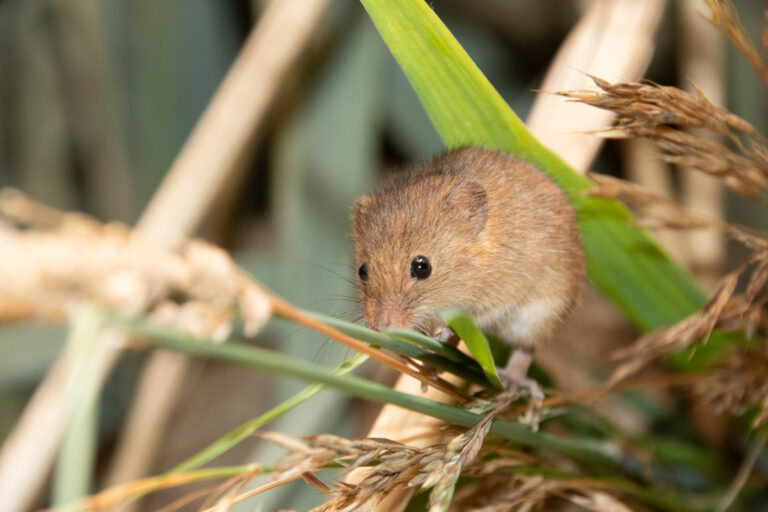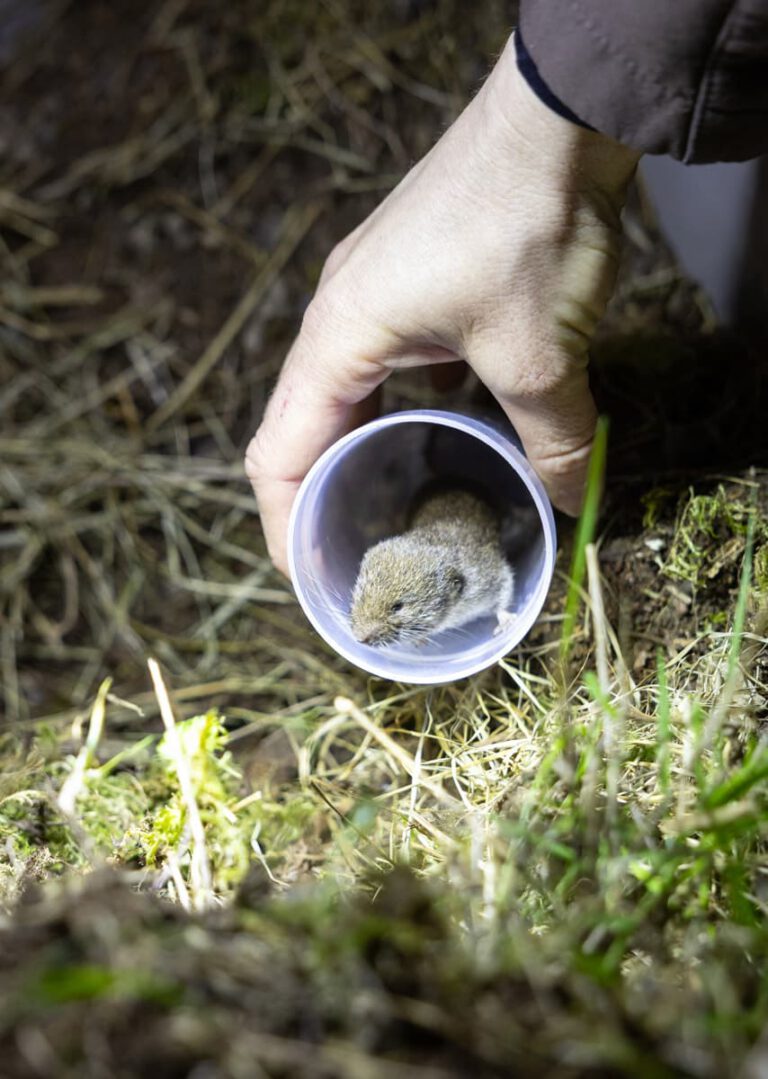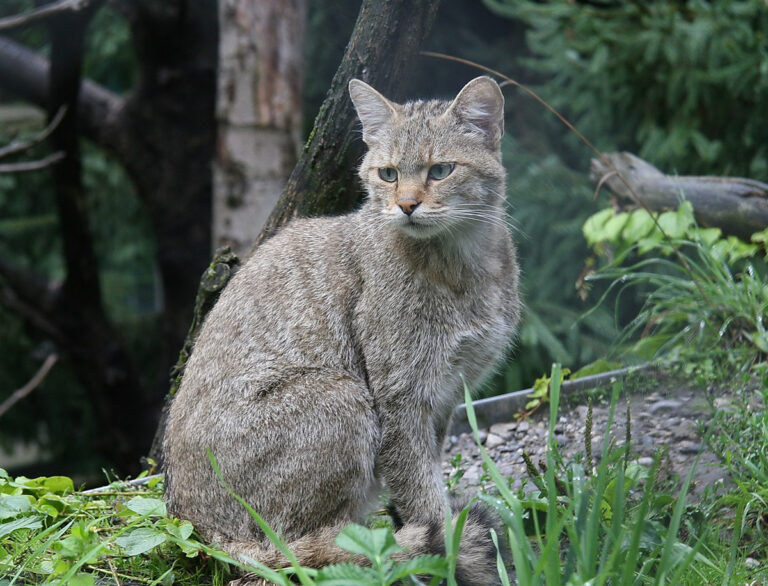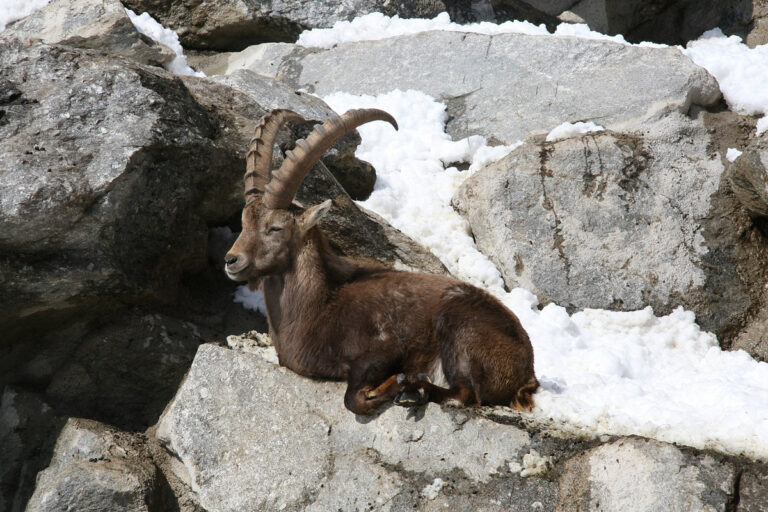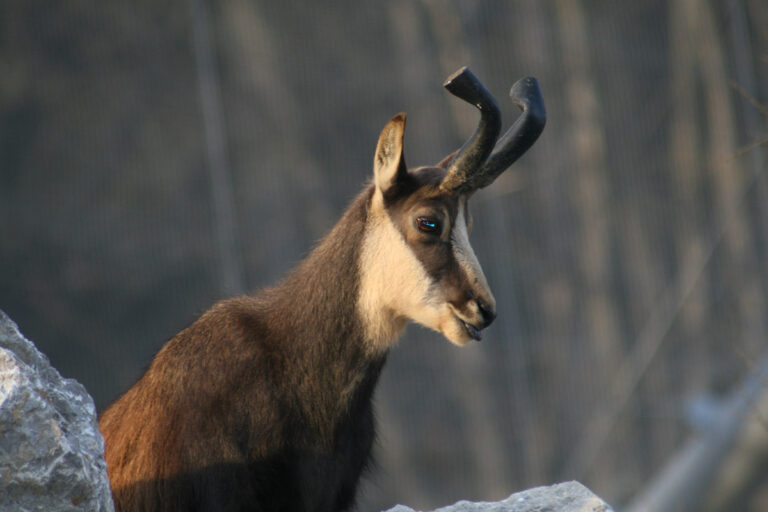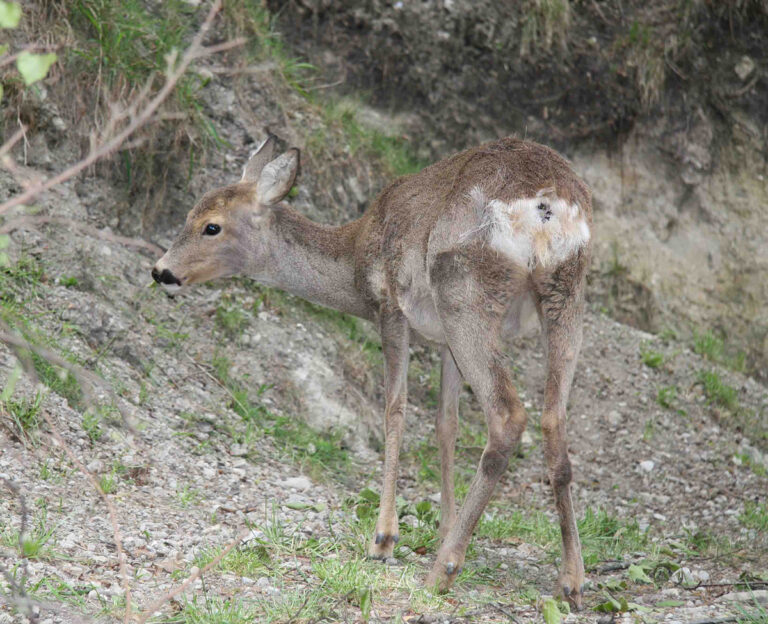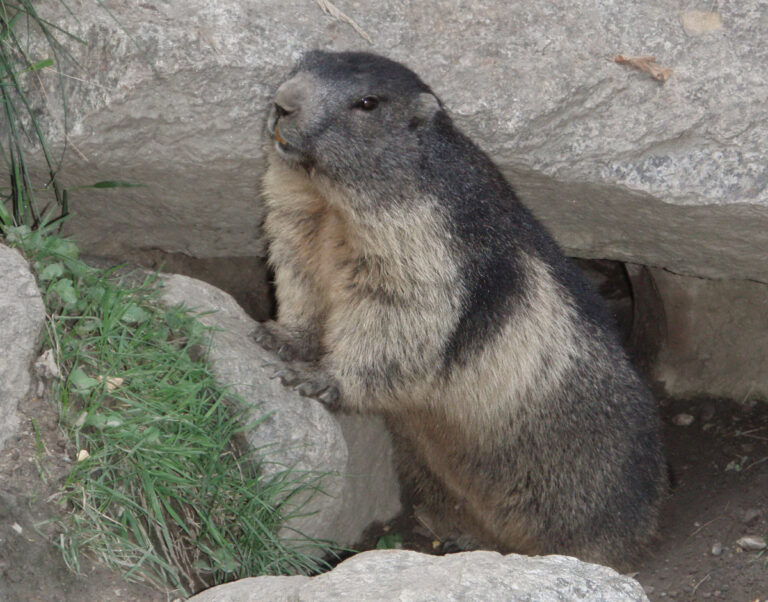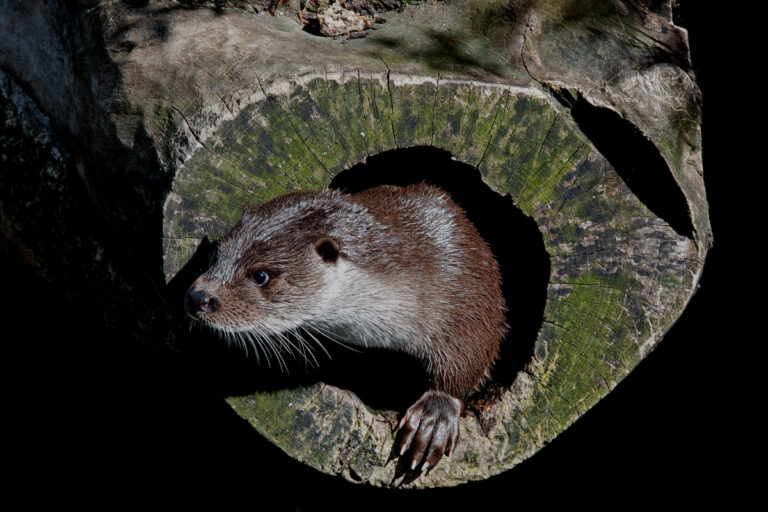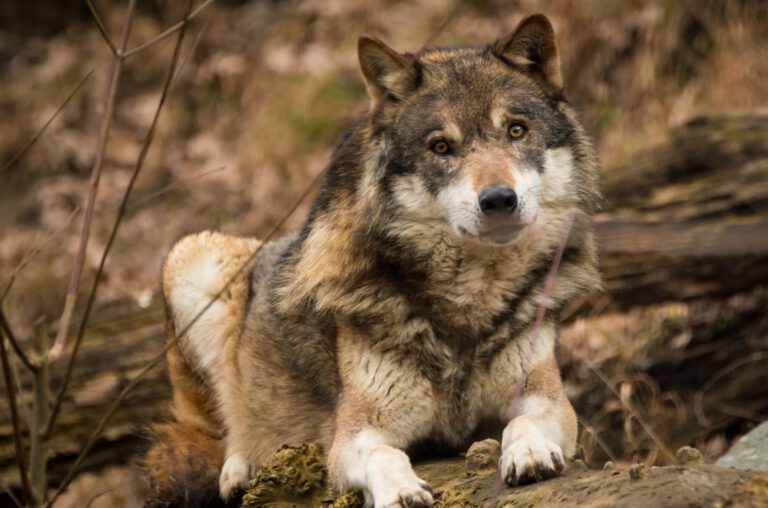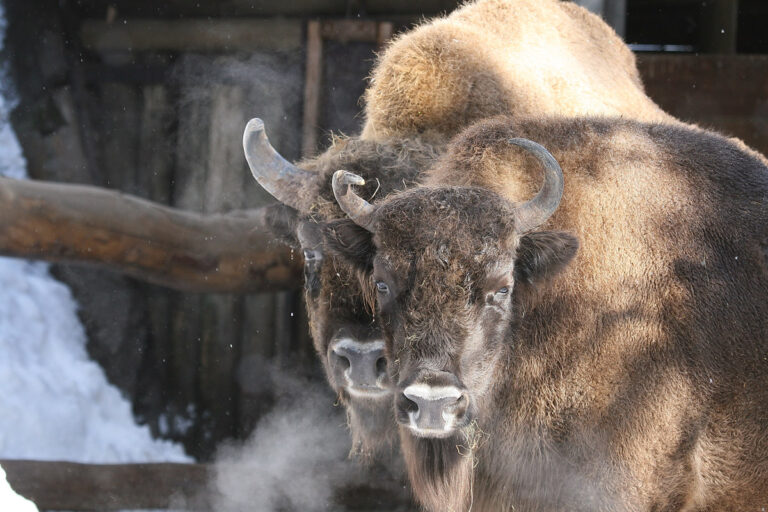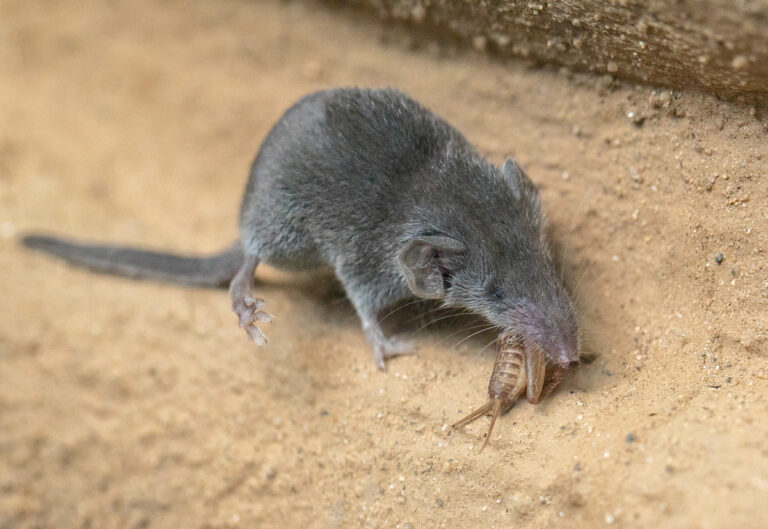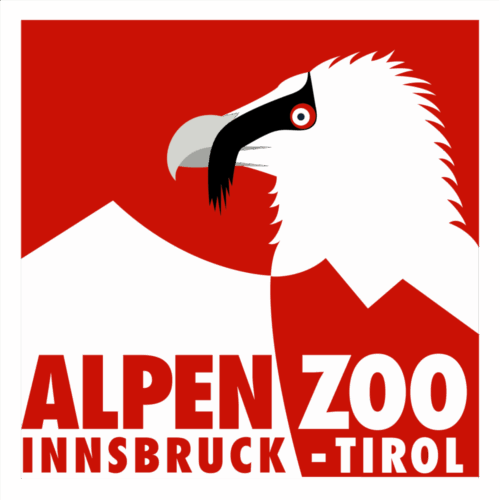Moose
As the largest deer species, moose are more closely related to roe deer than to red deer. Moose do not live in packs, but are solitary animals. During the ice ages, they colonised the high moors and tundras of the Alps and can therefore be seen in the Alpine Zoo, just like the bison. Today, the elk is no longer an Alpine animal. Their long legs and large hooves make it easier for them to move around in swamps and deep snow. Moose prefer to eat foliage and coniferous branches, which they grasp with their enlarged upper lip ("mouf") as if with a gripping hand. The first moose came to the Alpine Zoo as a gift from the Swedish royal family. They defend themselves against the main predator, the wolf, with powerful, lightning-fast kicks from their front and hind legs. Moose are therefore also dangerous to humans. Animal keepers are only allowed to enter the enclosure for cleaning when the animals are in the barn. Moose are tricky animals to feed.
- The moose is a very good swimmer and is the only deer species equipped with webbed feet for this purpose. In lakes, it likes to fetch seaweed from depths of up to six metres.
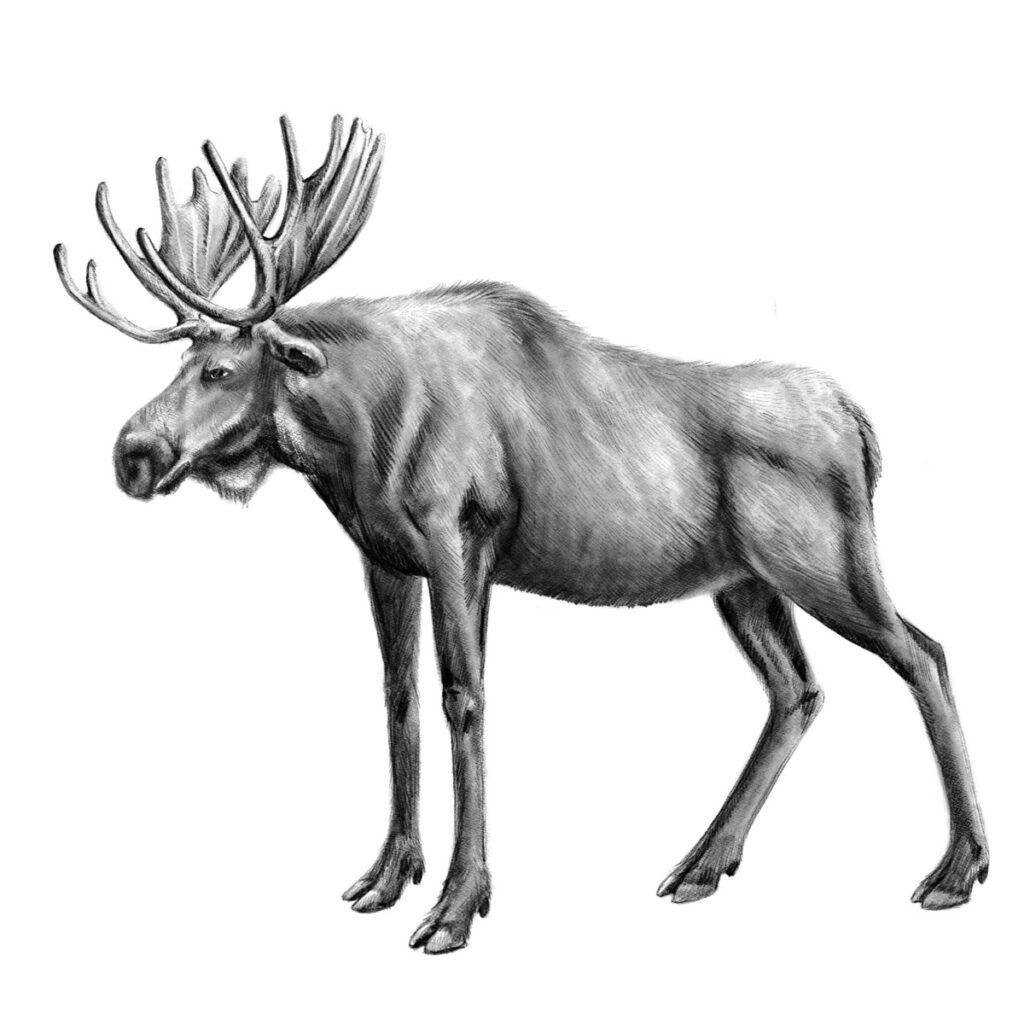
SCIENTIFIC NAME
Alces alces
AGE
- up to 20 years
FOOD
- Poplars
- Birches
- Willows
- Aquatic plants
FINE
- Brown bear
- Wolf
WEIGHT
- up to 500 kg
OTHER MAMMALS
We look forward to seeing you
Experience a fascinating world full of adventure and amazing animal encounters. Plan your visit to the zoo now and immerse yourself in the heart of nature!
